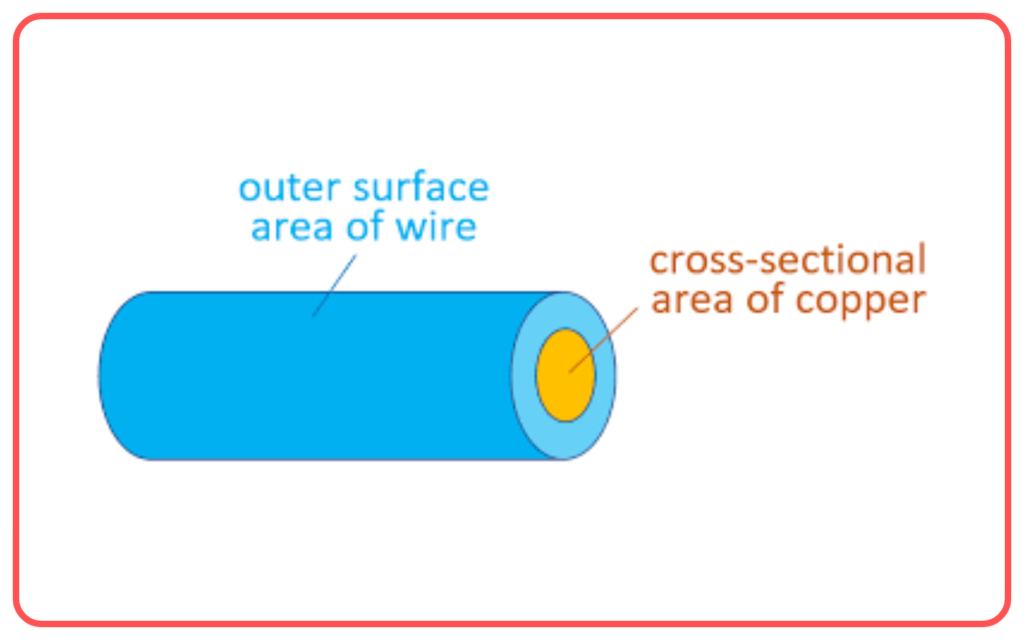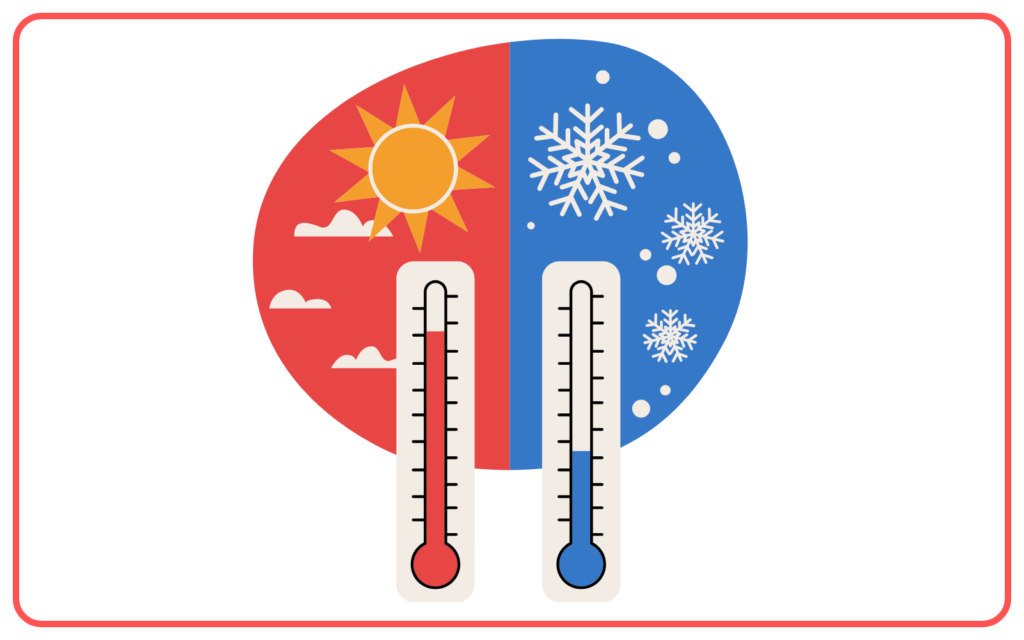Factors On Which The Resistance Of A Conductor Depends
Key Notes:
Length of the Conductor:
- Resistance is directly proportional to the length of the conductor.
- The longer the conductor, the more resistance it offers to the flow of electric current.
R ∝ L

Cross-Sectional Area of the Conductor:
- Resistance is inversely proportional to the cross-sectional area.
- A conductor with a larger cross-sectional area has less resistance, allowing current to flow more easily.
R ∝ 1/A

Material of the Conductor:
- Different materials have different resistivities.
- Conductors like copper or silver have low resistivity and, therefore, low resistance, while materials like rubber or plastic have high resistivity and high resistance.
- Resistivity is denoted by ρ, and the resistance R depends on the material’s intrinsic property.
Temperature:
- For most conductors, resistance increases with an increase in temperature.

- As the temperature rises, atoms in the conductor vibrate more, causing more collisions between electrons and atoms, which increases resistance.
Formula for Resistance:
- The resistance R of a conductor is given by the formula:
R = ρ L/A
- R is the resistance,
- ρ is the resistivity of the material,
- L is the length of the conductor,
- A is the cross-sectional area.
Let’s practice!

